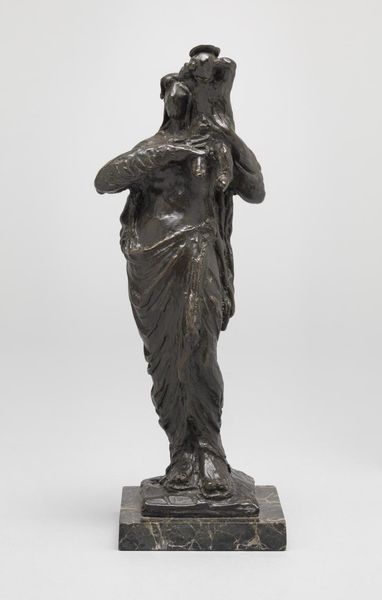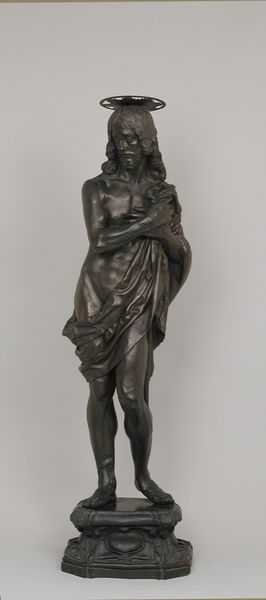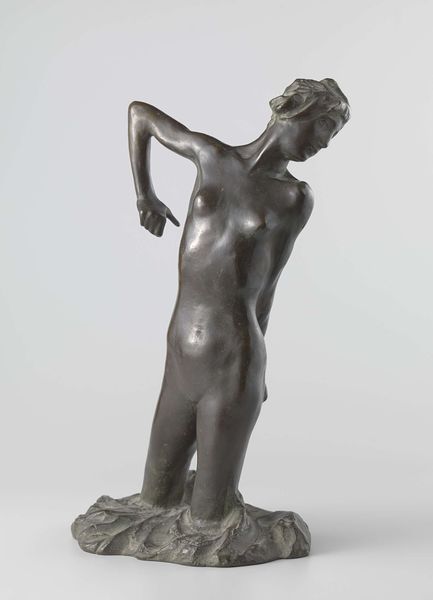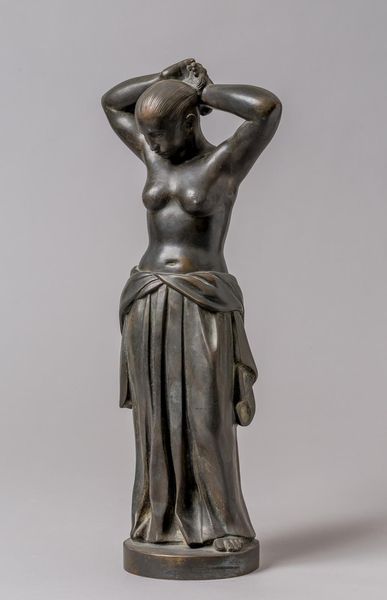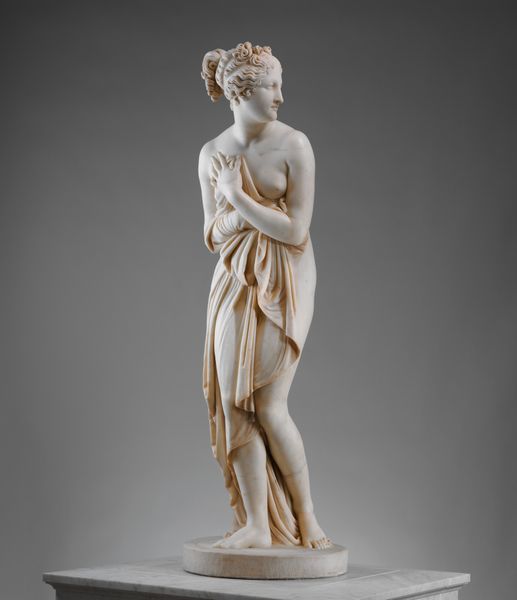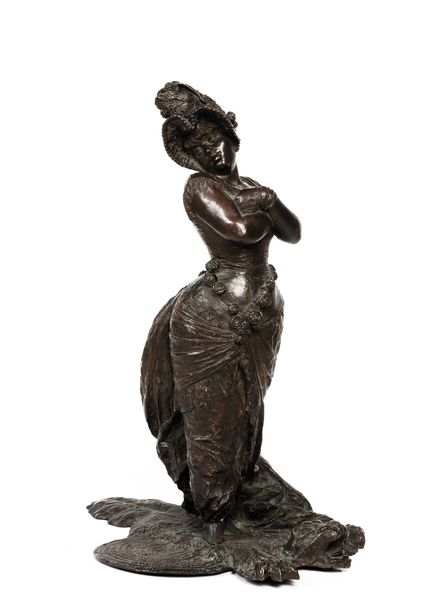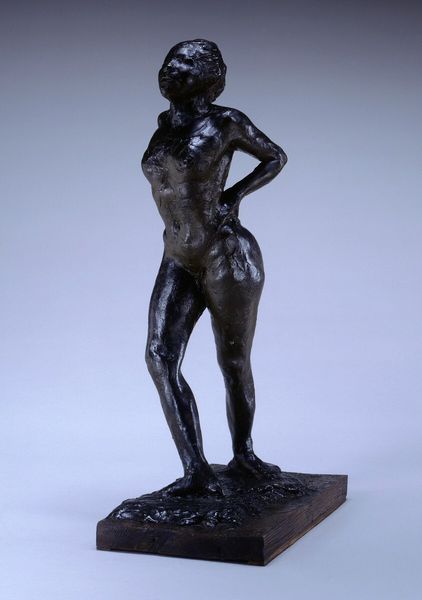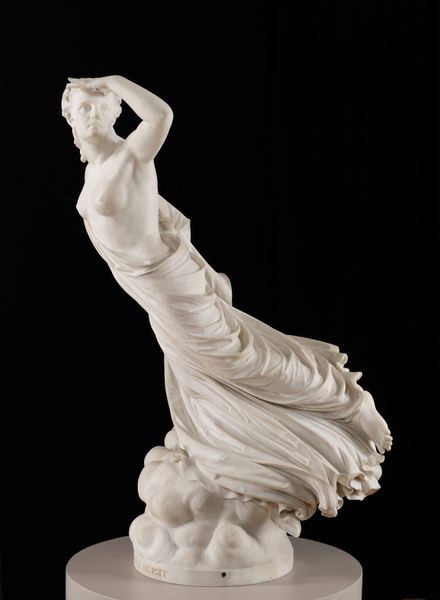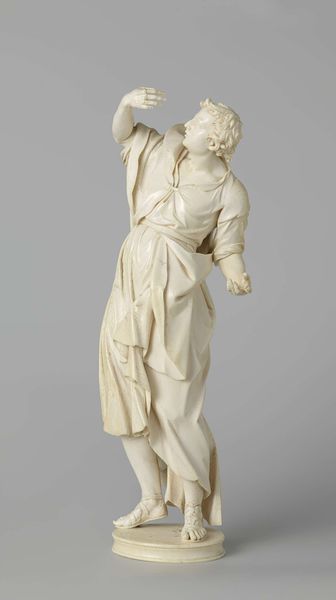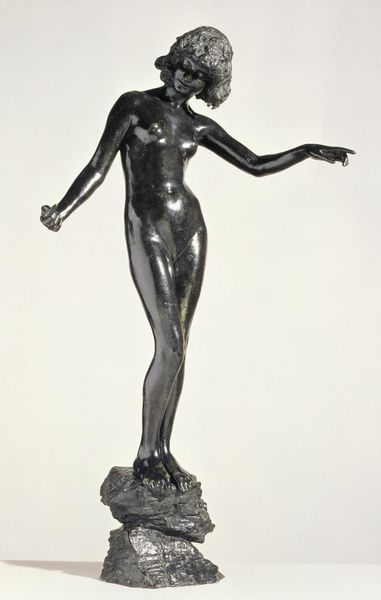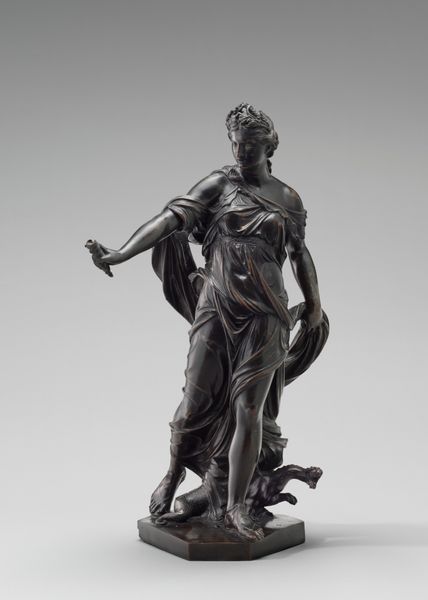
Dimensions: 85.7 × (diam. of base) 24.4 cm (33 3/4 × 9 5/8 in.)
Copyright: Public Domain
Curator: Olin Levi Warner's bronze sculpture, "Twilight," crafted around 1878, presents a draped female figure in a moment of quiet introspection. What are your initial impressions? Editor: Immediately, a sense of melancholy washes over me. The way she's shrouded, almost hiding her face, speaks to a profound interiority and a certain resignation, but also incredible strength. There is a quiet power here. Curator: It's fascinating to consider the social context in which Warner created this work. The late 19th century was a period of immense societal shifts, particularly in the roles afforded to women. Do you see any of that tension reflected in the piece? Is this a woman embracing or retreating? Editor: Both, perhaps. The drapery, classically inspired, becomes almost a cage. She embodies classical beauty ideals, but also seems trapped within them. The way she raises her hands toward her head reminds me of the motif of the veil in mythology, a symbol of both mystery and confinement, maybe referencing cultural expectations of feminine virtue. Curator: Yes, and consider the title "Twilight," often a liminal space, between day and night, neither fully one nor the other. This resonates deeply with your points about social tensions and transitionary stages in female expectations and emancipation struggles at the time. Her nudity suggests vulnerability, but the bronze asserts permanence. It speaks to the contradictions inherent in representations of women during this time, this tightrope between liberty and restraint. Editor: It makes me wonder what "twilight" personally represents for the artist, Warner, when he decided upon the title. Beyond societal expectations, what psychological landscape informs his artistic choices? Perhaps for him twilight symbolized reflection, closure, or even anticipation of change. After all, change will usher in another twilight someday, for the cycle to repeat. Curator: Absolutely, and thinking about those artistic choices reveals an important tension in this Neoclassical piece. The realistic rendering clashes slightly with this archetypal or idealized femininity. But the tension reveals a truth. I appreciate your focus on this inherent conflict of memory that shapes us individually and society at large. Editor: And I value how your focus on cultural factors of the moment grounds my intuitions about symbols that may predate Neoclassicism by thousands of years. They interact constantly. Thanks for that reminder!
Comments
No comments
Be the first to comment and join the conversation on the ultimate creative platform.
